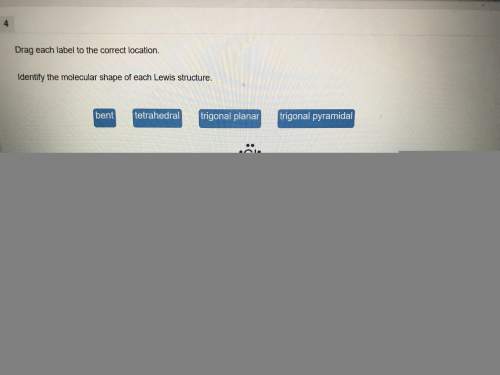
Chemistry, 25.10.2020 23:30 babydogdog4375
A beaker is filled with 250 grams of water (c=4.184 J/g degrees C) at room temperature (22.0 degrees C). A 37.2 gram piece of unknown metal is heated to 380 degrees C and then dropped into the cold water. When the temperature stops changing, they are now at 27.2 degrees C.
a) How much heat energy is gained by the water during the process?
b) How much heat energy is lost by the metal during the process?
c) What is the specific heat (c) for the metal?

Answers: 2


Another question on Chemistry

Chemistry, 22.06.2019 04:00
What layer of the atmosphere is directly above the troposphere?
Answers: 1

Chemistry, 22.06.2019 21:00
As we move from left to right across the periodic table, what is the general trend? a) atomic radii increase. b) electronegavitiy decreases. c) nuclear shielding increases. d) metallic character decreases.
Answers: 1

Chemistry, 22.06.2019 22:00
8) warming your hands by a fire is an example if which heat transfer? a. conduction b. convection c. radiation d. none of these
Answers: 1

Chemistry, 22.06.2019 22:30
You just calculated that the heat of fusion for chloromethane is 6400 j/mol. the heat of fusion for hydrogen is 120 j/mol.? which of the following account for this difference? more than one correcta. chloromethane can absorb more energy at the same temperature. b. hydrogen has stronger intermolecular forces than chloromethane. c. hydrogen molecules can pack more closely than chloromethane molecules. d. chloromethane experiences dipole-dipole interactions. e. chloromethane has a higher molar mass than hydrogen.
Answers: 3
You know the right answer?
A beaker is filled with 250 grams of water (c=4.184 J/g degrees C) at room temperature (22.0 degrees...
Questions


Mathematics, 01.04.2020 01:05



Mathematics, 01.04.2020 01:05

Chemistry, 01.04.2020 01:05









Mathematics, 01.04.2020 01:05


Mathematics, 01.04.2020 01:05

Biology, 01.04.2020 01:05

Mathematics, 01.04.2020 01:05




